Maharashtrian cuisine Festival special meal
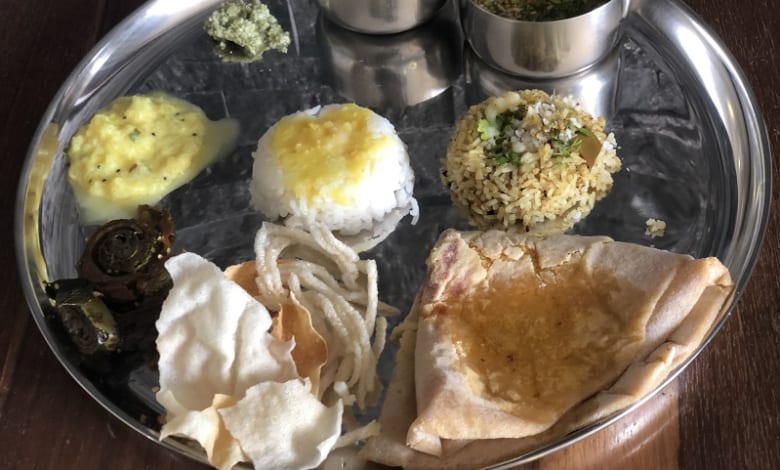
As I am born and brought up in Maharashtra, Maharashtrian cuisine has been a part and parcel of my daily life. My mother as well my mother in law is a fan of local cooking rather than continental. So we have been experiencing the beauty of Maharashtrian cooking since childhood, especially as a festival special meal plan.
I remember many distinct incidents from my childhood, where my relatives would get together at any festival. Be it Dussehra, Diwali, or Gauri – Ganesha festival! My maasi rolling Puran polis, my aunt frying pakoras, and mom preparing the aluwadi (a type of fritter made from colocasia leaves) and koshimbir or raita. Just like any other local cuisine, all these smells have been an integral part of our festive celebrations.
Although there are multiple varieties of Maharashtrian cuisine – like Kokan, Desh, Khandeshi, Vidarbha, and Marathwada. I am a blend of Deshastha and Kokanastha. I like to think that I have successfully adopted the best things of these cuisines and introduced them into my daily cooking.
About Gauri Pujan
Gauri Pujan has its roots in Vedas. At God’s request, Parvati kills the asuras and we celebrate her victory by Gauri Pujan. There is another story which says that the two Gauris – Jyeshtha and Kanishtha are sisters of Ganapati and have come to visit him during the Ganesh festival.
Gauri Pujan is a big festival in many households in Maharashtra. The entire household sings Aarati or musical hymns that praise the Gods amidst the fragrant incense sticks, temple bell sounds, and thundering claps. After the aarti and offering, everyone sits together to enjoy the feast.
Also read: Ganesh festival – A new age guide to your celebrations at home
History of Maharashtrian cuisine
Although the Maharashtrian menu was developed during the mighty Maratha empire, it got its true glamour during the Peshwa empire. The cooks in the Peshwa empire introduced the manner in which Maharashtrian food is served on a plate during the 17th century.
The people in Maharashtra were never very rich, so they adapted to their surroundings and were resourceful with the things available to them.
The generations have improvised the traditional menus and food items, but the basic recipes, aaiji’s masala (grandmother’s spices) and aaichya hatachi chav (taste of mom’s cooking) remain the same!
Food Items in Maharashtrian cuisine
It’s not a 3 course or a 5-course meal. Generally, we arrange all the food items in or around the plate at one go. There is a system to this arrangement. This system has been passed on from generation to generation of mothers and grandmothers orally and not bound to change soon.
The meal starts with Varan Bhat (Pigeon pea split beans curry with only turmeric and salt), Masale Bhat (spicy Maharashtrian style rice delicacy). This is then followed by Puranpoli or Roti (Maharashtrian style ghadichi poli) ending again with rice. The food is finished with a glass of buttermilk for digestive purposes. Also, a vidyache paan (betel leaf) is consumed at the end.
Few highlights of this preparation are –
- Tempering with cumin seeds along with mustard seeds and curry leaves is a highlight.
- Onion and garlic are strictly prohibited in festival special meals.
- We use curd in raita called koshimbir and not with any other spices.
- The use of grated coconut and diced coriander leaves for garnishing is abundant.
- Lemon is used to lend a sourness to dry vegetables whereas tamarind is used gravy vegetables and curries.
- The use of jaggery is predominant to lend a dash of sweetness to the vegetables.
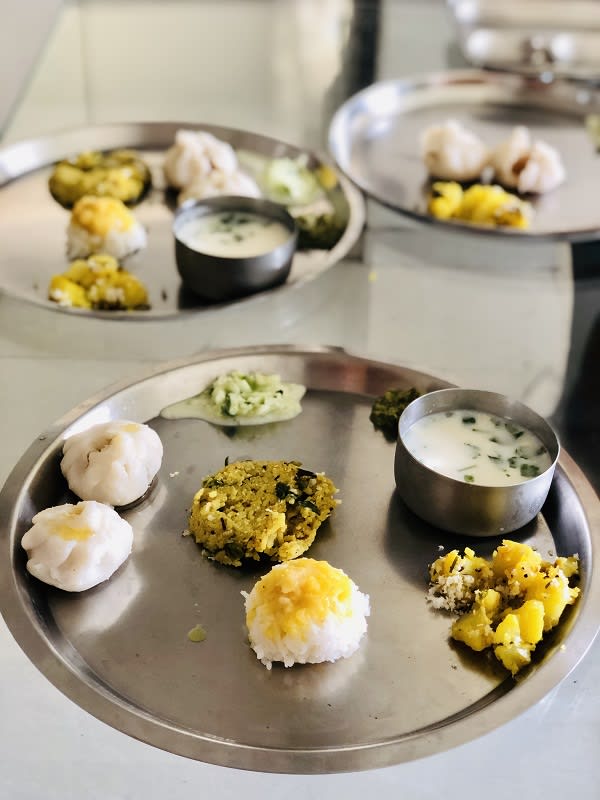
This is a list of some items on the food menu of Gauri Jewan –
Green chutney and/or Amsul Chutney
Chutney is the first item that we serve on the plate. It’s a spicy blend or kind of a dip which enhances the favor of other items. I make Green chutney is using grated coconut, coriander leaves, ginger pieces, chili, lemon juice, and salt and sugar to taste.
Kokum (Amsul) chutney is a blend of dried cover of kokum fruit, jaggery, cumin seeds, and red chili to taste.
Koshimbir or Raita or Bharit
The most favorite is normally the cucumber koshimbir. For this, I add curd and crushed groundnuts to grated cucumber, temper it with cumin seeds and ghee. And then finally garnish it with finely cut coriander leaves.
Another favorite is pumpkin raita or bhoplyacha bharit. I add curd to the steamed and mashed pumpkin pieces, then temper it with cumin seeds and ghee. And then garnish it with coriander leaves.
Raita serves as a side dish which we relish with roti or rice. It balances out the other spicy items in the dish. Other examples are apple raita, guava koshimbir, or potato raita. Cabbage raita is also another favorite dish, which we more popularly know as ‘Kobichi Pachadi‘.
Papad and/or Kurdai
These are just the crunchy accompaniments or finger foods bringing a fun element to the plate. My mother in law prepares Kurdai or crispies and papad from wheat flour or rice or udad. The normally dried version is prepared as a part of summer activities. They are available for frying all throughout the year. My favorite kind is Poha Mirgund Papad.
Bhajis or Pakoras or fritters as made in Maharashtrian cuisine
We all are familiar with the fritters. This is another kind of appetizer which we serve with papad and kurdai on a Maharashtrian plate. Normally we make potato fritters or ridge gourd (ghosavale) fritters. But spinach fritters or just coriander leaves fritters can also be other options. These are deep-fried in oil and served hot.
You would like to read: Offbeat monsoon special fritters
Maharashtrian cuisine special Sweet/desert
There has to be one main sweet dish on the plate. It can be Shrikhand (A Maharashtrian sweet dish made from strained yogurt) or Gulab Jamun (khoya based sweet). The sweet can also be Puran Poli or Modak (sweet dumplings made from coconut and jaggery).
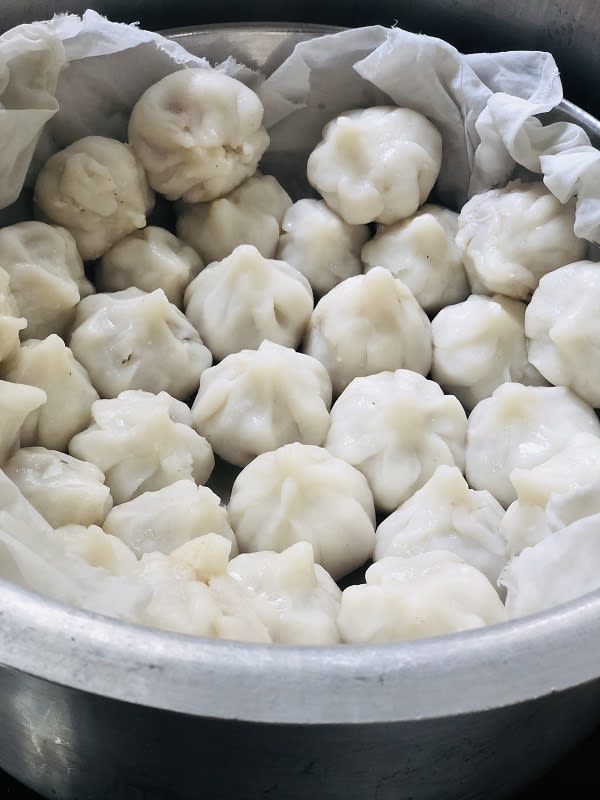
Bhaji or vegetable and/or Usal or sprouts curry
As a part of the main course, we use cabbage, potato or bhindi, or okra to prepare any dry vegetable. Few people also opt for gravy vegetables like cauliflower-peas rassa / vegetables. However, the festival’s special Maharashtrian style steamed potato vegetable is most popular amongst all.
Matki Usal is another popular Maharashtrian dish. We make it out of sprouted moth beans making it a protein-rich, gluten-free, vegan recipe.
We use Goda masala ( Maharashtrian style blend of spices) for the aroma and taste of these vegetables.
Curry or Amti as made in Maharashtrian cuisine
Lentil preparation is kind of mandatory. Regular Turichi Amti (split pigeon pea curry) with steamed rice is comfort food on any normal day. Maharashtrian prepare such turichi amti or katachi amti using the essence of tamarind and jaggery and of course Goda masala.
We prepare Varan (split pigeon pea lentil curry) by mixing turmeric, salt, and asafoetida in steamed lentils. Generally, Varan and rice served hot with ghee and lemon juice sprinkled on top is a mandatory item in any festival special meal.
Kheer – Puran
Kheer is a kind of vermicelli pudding or payasam, which we make by steaming vermicelli in boiling milk and then garnished with saffron and cut dry fruits.
Puran is a sweet blend of boiled split chana dal (Bengal gram) and jaggery. We make Puran poli by stuffing this mixture in roti flour and then rolling them. The sweet stuffing called Puran tastes lovely with ghee on top.
A spoonful or kheer and Puran is mandatory in a Maharashtrian festival thali, even when you have a separate sweet dish prepared.
Panchamrut
One should not confuse this with the Panchamrut which we use as an offering in Puja. This Maharashtrian specialty has tamarind, jaggery, crushed groundnuts, dry coconut slices, and white sesame seeds as its five ingredients.
Ghadichi poli or Roti
We call this typical Maharashtrian roti preparation – ‘ghadichi poli‘ due to the method in which we roll the roti.
Masala Bhat
Maharashtrian Masala Bhat is a recipe where we steam the rice with select spices (especially Maharashtrian goda masala) and vegetables. The end result is flavorful and tasty rice blending perfectly with the rest of Maharashtrian cuisine.
Here’s a recipe from Hebbar’s Kitchen, if you like!
Buttermilk
Jalebi as well as Masala Bhat taste great with buttermilk. Even if these items are not present in the dish, buttermilk is always present to bring the appropriate tang to the dish as well as help is digesting the heavy meal.
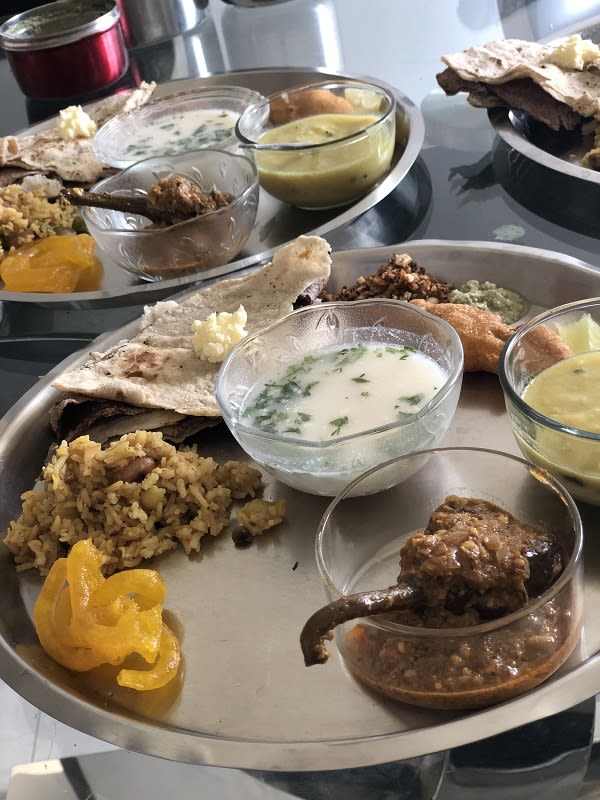
There can be many more additions to this list depending upon the occasion and the enthusiasm of the cook as well as the guest! The items from other cuisines like Rasmalai, jalebi has also now made way into the Maharashtrian cuisine. But the essence remains the same!
Also read our 30-minute Festival special meal plans, if you wish to make it quick! You can use the tricks given in the blog for better meal planning.
Till then enjoy our Maharashtrian cuisine blog. Drop a comment below if you like it and do not forget to tag us if you share this blog post and share your own Maharashtrian cuisine!


.jpg)

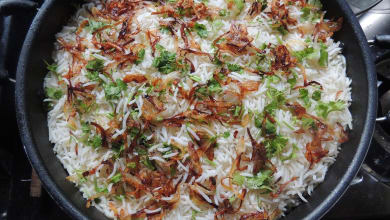


One Comment